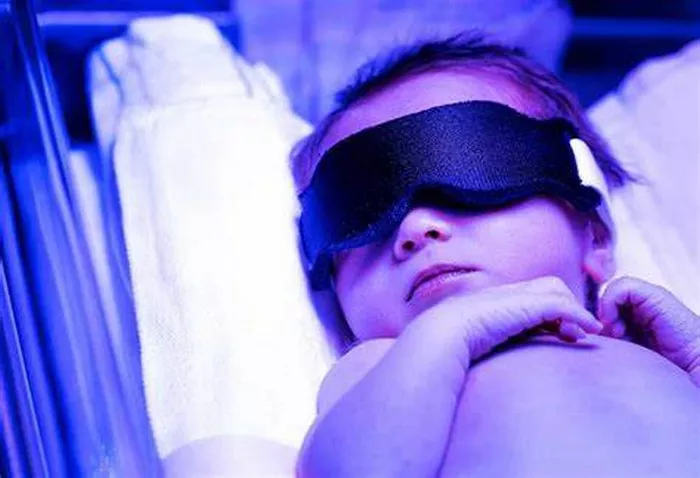Jaundice in newborns, medically termed neonatal jaundice, is a common condition characterized by the yellowing of the skin and eyes due to elevated levels of bilirubin in the blood. While jaundice typically resolves on its own, it’s crucial to monitor and manage it promptly to prevent potential complications. In this comprehensive guide, we delve into the fastest and most effective methods for treating jaundice in newborns, ensuring their optimal health and well-being.
Understanding Neonatal Jaundice: Causes and Risk Factors
Before exploring the treatment options for neonatal jaundice, it’s essential to understand its underlying causes and risk factors. Bilirubin, a yellow pigment produced during the breakdown of red blood cells, is normally processed by the liver and excreted from the body. However, in newborns, the liver may not yet be fully developed, leading to the accumulation of bilirubin in the blood, resulting in jaundice.
Various factors can contribute to the development of neonatal jaundice, including:
1. Physiological Jaundice: This is the most common type of jaundice in newborns, typically appearing a few days after birth and resolving within one to two weeks. It occurs due to the immaturity of the baby’s liver, which may struggle to efficiently process bilirubin.
2. Breastfeeding Jaundice: Breastfeeding jaundice can occur when a newborn is not receiving enough breast milk, leading to dehydration and reduced bilirubin elimination. It usually occurs in the first week of life and can exacerbate physiological jaundice.
3. Breast Milk Jaundice: Unlike breastfeeding jaundice, breast milk jaundice is caused by certain substances in breast milk that can inhibit bilirubin elimination. It typically appears after the first week of life and may persist for several weeks.
4. Blood Type Incompatibility: If a mother and baby have incompatible blood types, such as Rh or ABO incompatibility, the mother’s antibodies may attack the baby’s red blood cells, leading to increased bilirubin levels.
5. Prematurity: Premature infants are at a higher risk of developing jaundice due to their underdeveloped liver function and increased breakdown of red blood cells.
Early Detection and Monitoring
Early detection and monitoring of jaundice in newborns are essential for timely intervention and preventing complications. Healthcare providers typically assess jaundice by visually inspecting the baby’s skin and eyes for yellow discoloration. In some cases, a blood test may be performed to measure the baby’s bilirubin levels accurately.
Healthcare providers use various methods to assess jaundice severity, such as the Kramer scale or transcutaneous bilirubinometry. These tools help determine the need for treatment and monitor the effectiveness of interventions.
Phototherapy: A Rapid and Effective Treatment Option
Phototherapy is the primary treatment for neonatal jaundice and is widely regarded as the fastest and most effective intervention. This non-invasive therapy involves exposing the baby’s skin to special blue or white lights, which help break down bilirubin into a form that can be excreted from the body more easily.
During phototherapy, the baby is placed under the lights in a warm, enclosed crib, with protective eye patches to shield their eyes from the bright light. The duration of phototherapy varies depending on the baby’s bilirubin levels and response to treatment but typically lasts for 24 to 72 hours.
Phototherapy is highly effective in reducing bilirubin levels and alleviating jaundice symptoms. In many cases, it can significantly shorten the duration of jaundice and reduce the risk of complications, such as kernicterus, a rare but serious condition characterized by bilirubin toxicity.
Supplemental Feeding and Hydration
In cases of breastfeeding jaundice, ensuring adequate feeding and hydration is essential for promoting bilirubin elimination and preventing further jaundice progression. Healthcare providers may recommend supplementing breastfeeding with expressed breast milk or formula to ensure the baby receives enough nutrients and fluids.
Additionally, frequent breastfeeding sessions can stimulate the baby’s digestive system and promote bowel movements, which can help eliminate bilirubin from the body. Encouraging skin-to-skin contact and responsive feeding can also enhance the breastfeeding experience and support the baby’s overall well-being.
Exchange Transfusion: A Last Resort Intervention
In rare cases of severe jaundice or when other treatments are ineffective, exchange transfusion may be necessary. This procedure involves removing a small amount of the baby’s blood and replacing it with donor blood or a blood substitute.
Exchange transfusion rapidly reduces the baby’s bilirubin levels and can be life-saving in critical situations. However, it carries certain risks, including blood transfusion reactions, infection, and electrolyte imbalances, and is typically reserved for cases where the benefits outweigh the potential risks.
Conclusion
Neonatal jaundice is a common condition in newborns that requires prompt recognition and appropriate management to ensure optimal outcomes. While most cases of jaundice resolve on their own, timely intervention is crucial to prevent complications and promote the baby’s health and well-being.
Phototherapy remains the fastest and most effective treatment for neonatal jaundice, offering rapid reduction of bilirubin levels and alleviation of symptoms. Supplemental feeding, hydration, and close monitoring are also essential components of jaundice management, particularly in cases of breastfeeding jaundice.
By understanding the causes, risk factors, and treatment options for neonatal jaundice, healthcare providers can provide timely and effective care, ensuring the best possible outcomes for newborns and their families. Early detection, proactive management, and supportive care are key to successfully treating jaundice in newborns and promoting their healthy development.


